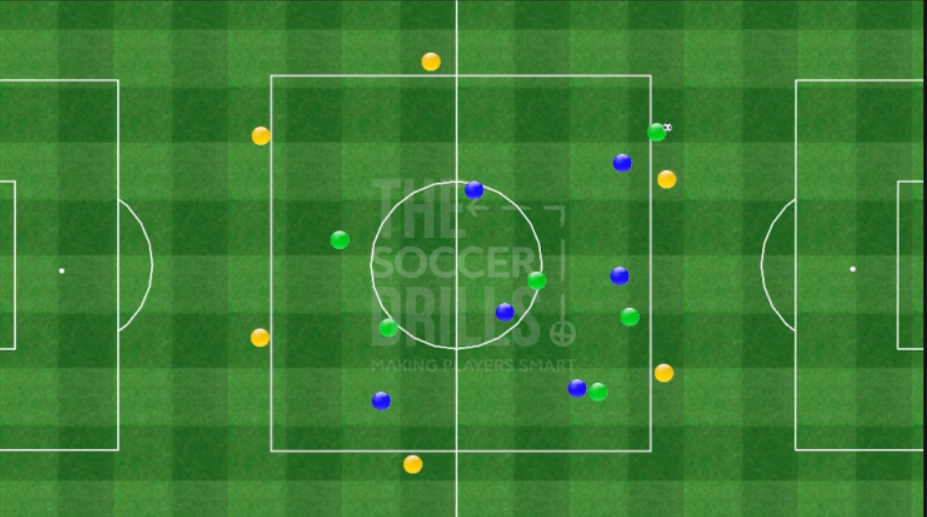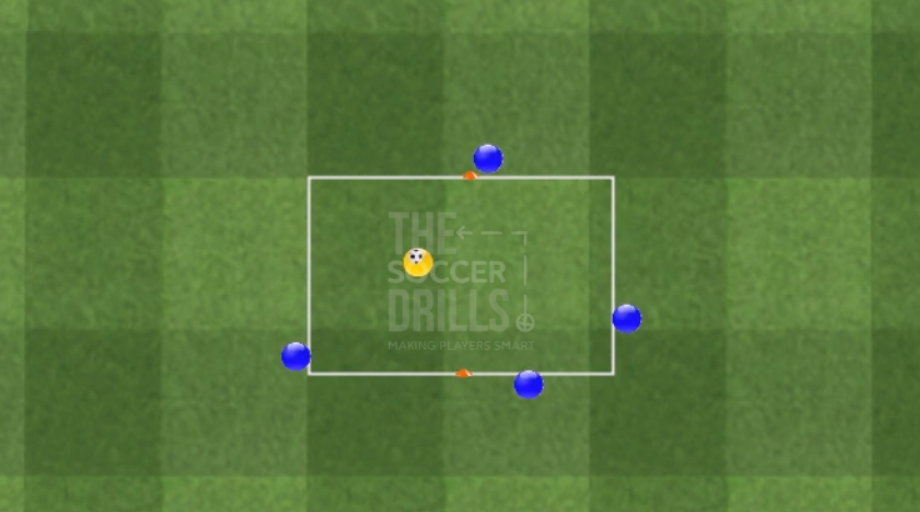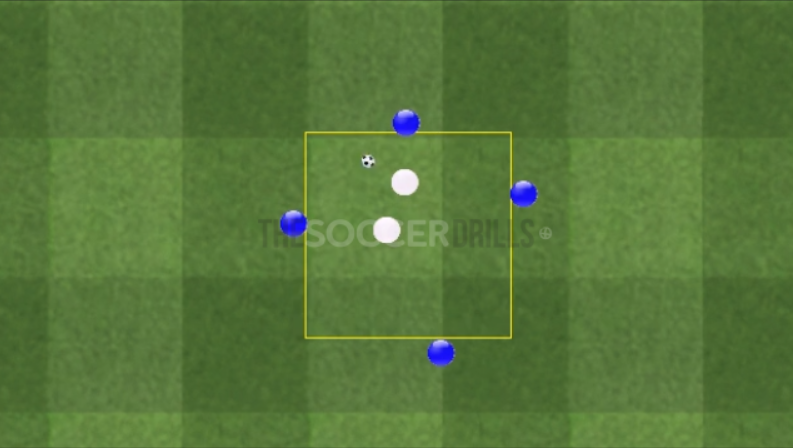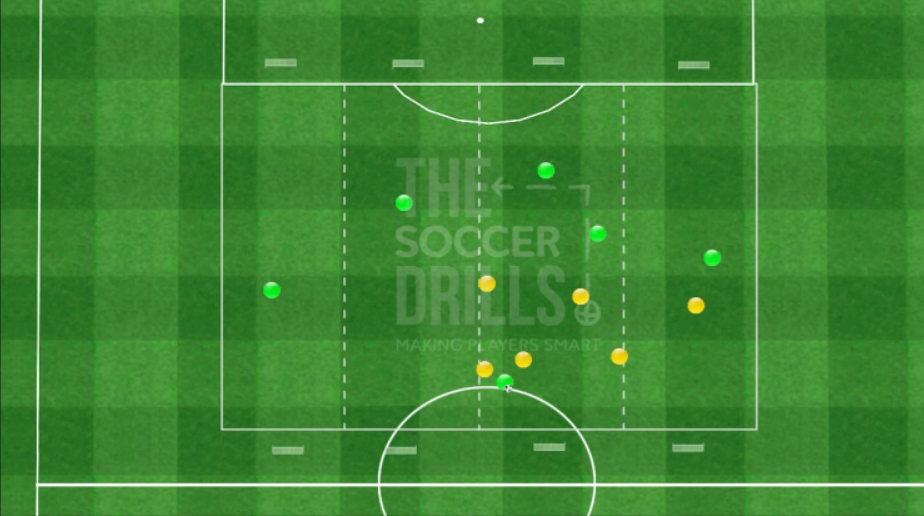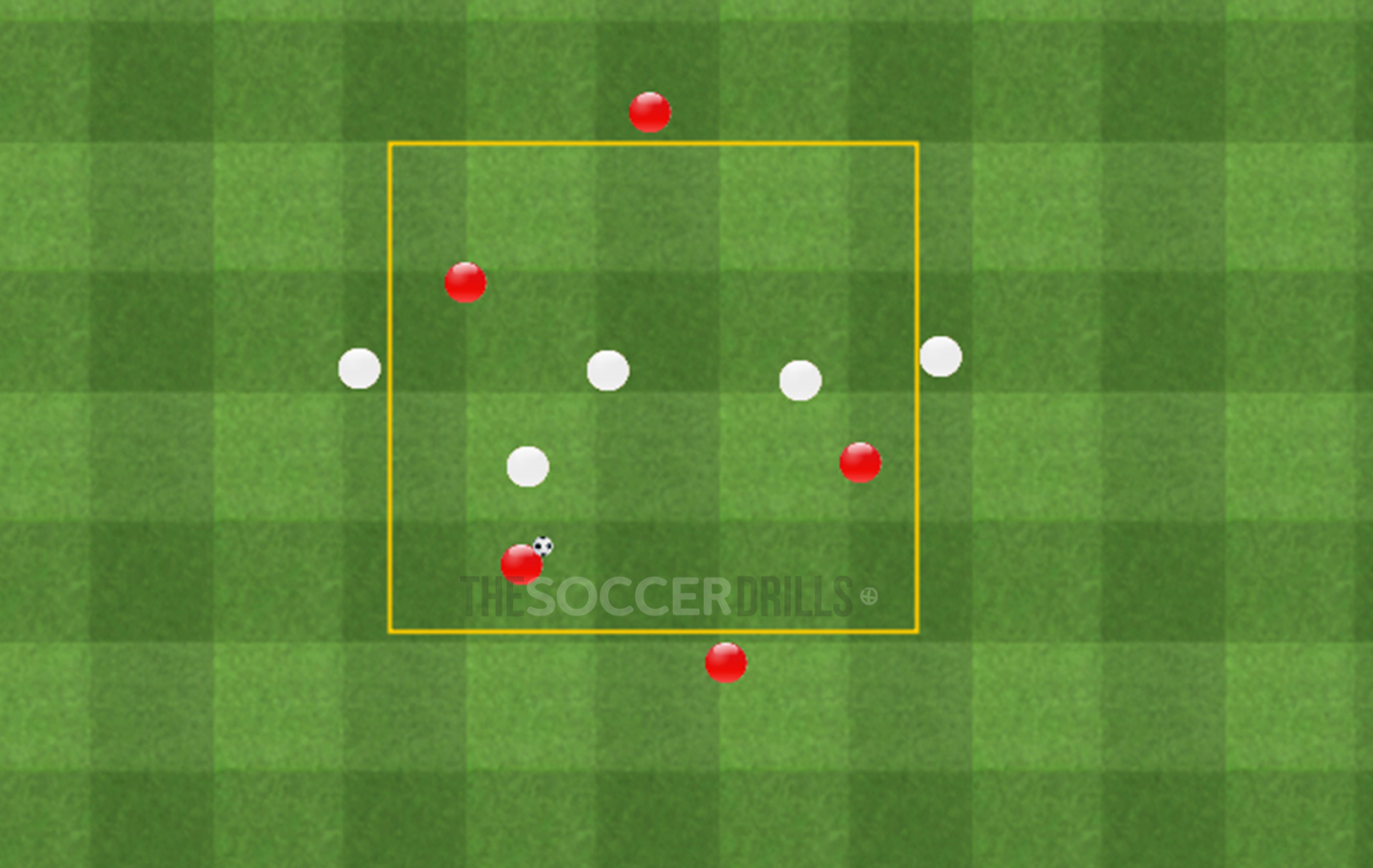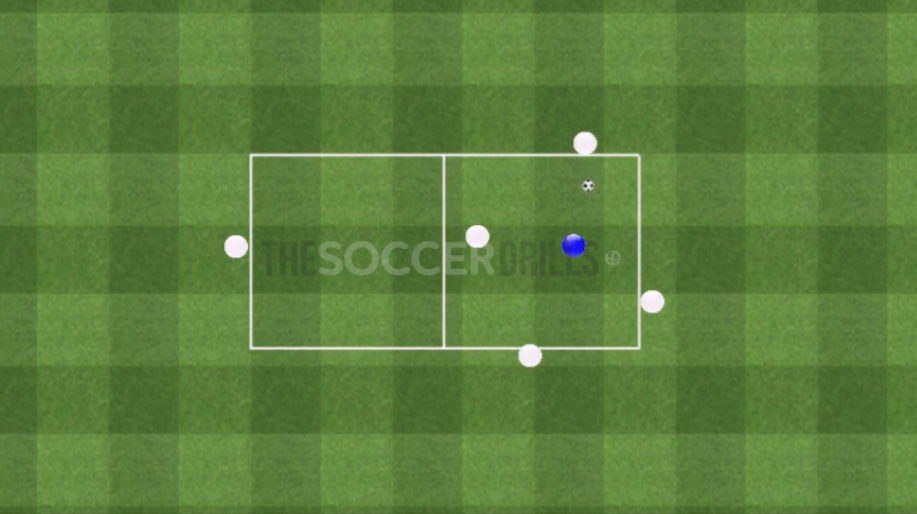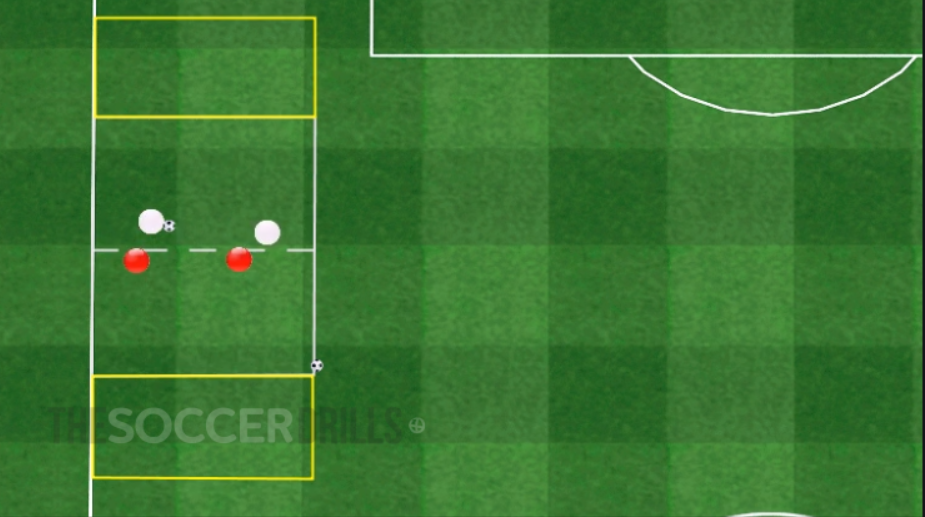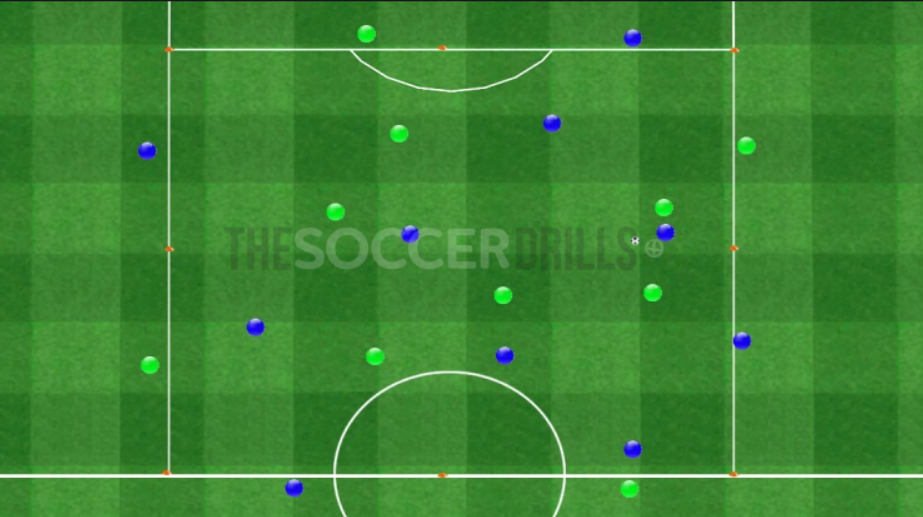Offensive and Defensive Transition 3 Teams
To practice both the momentum when losing the ball and when winning it back is key. It makes us be better on the offensive and defensive transition. We will use this drill as a tactical situation to activate the defenders’ press after losing the ball and for the team that has just win the ball back to play quick and easy.
Rondo Offensive Delay 4v1
Since regularly, all the rondos are played in a high pace, is it possible to practice a tactical rondo in which you work both the change of pace and the high and low pace? It is definitely possible if we include a small modification in the structure so our players can make decisions about the pace of the game.
Attract to switch the play
The creation of spaces is key in the offensive tactic. In this case, we will make the team to come and press us doing short passes in order to play to the deliberated side afterwards. This drill will make the players to give close, intermediate and far supports.
Rondo: Speed of game and coverages
Tactical rondos with a high demand of defensive concepts. If your defenders in the rondos do not delay, they are learning how to not delay the opponents attack in the games.
4 Lanes: Create Superiority 6v6
In a simple structure applicable to any style of play with a line of 4 in defense + 2 midfielders. You will find a lot of key tactical concepts in this drill: Shiftings, coverages, closing interior passes… and, in order to attack, a wide variety of offensive tactical concepts will be needed.
Different heights on the field in order to break lines
When winning the ball back, we take it out of a pressing zone, we reorganize and we try to break a defensive line. All of this with the need for a a good body shape to advance on the field.
Double Rondo
In this drill you will work on the change of pace, on passing the ball to attract de rivals and switching the play to the deliberated side and on choosing which the best moment for intercepting the ball is. All of these in a rondo that you can implement in U10 groups and older.
Small Sided Game Progression
Small sided tactical game in which we will fix the right press distances, the coverages, the defensive exchanges or the defensive support and we will create, for the attacking players, a situation in which they will practice to check to the ball and check away, one-two’s, feints and offensive timings. It will be an easy but very tactical drill, an excellent drill to strengthen the interaction between the players who are close to each other.
Conditioned Game: Min. 87 1-0
The ideal player is the one who manages either the offensive and defensive tactical situations. The direct attack looking for the second ball Is one of the parts of the game that the coaches need to know how to manage despite it might not be his most preferred part. As coaches, our objective has to be fo our players to learn as much as possible, not just only about what we like.
Offensive Vigilance and Free Man
A dynamic and safe way for attacking is either to find the third man or to be aware of where the defenders are (offensive vigilances). At the same time, you will have to find the appropriate distances so your team not always pass the ball to the closest players but also finds the mid-distance players, with the objective of braking the lines. In this drill, the defensive players practice the moment of activating the pressing in a coordinated way.
